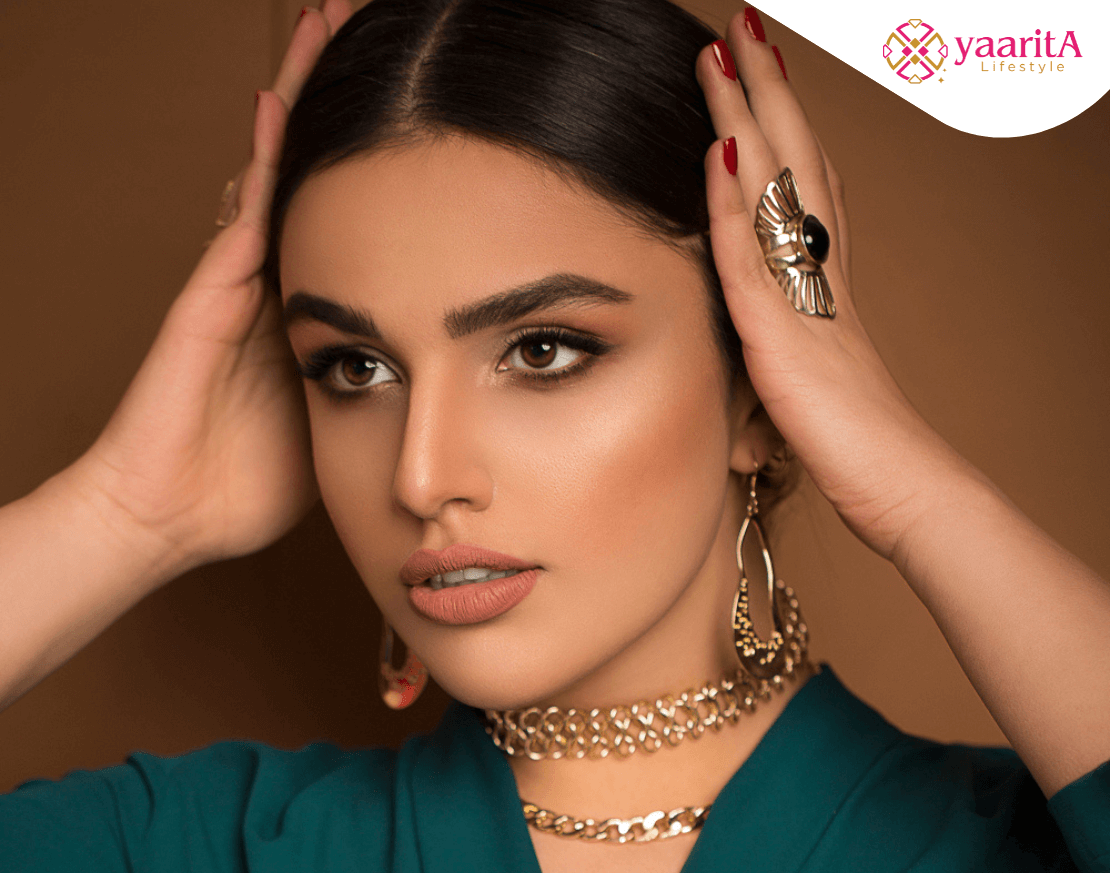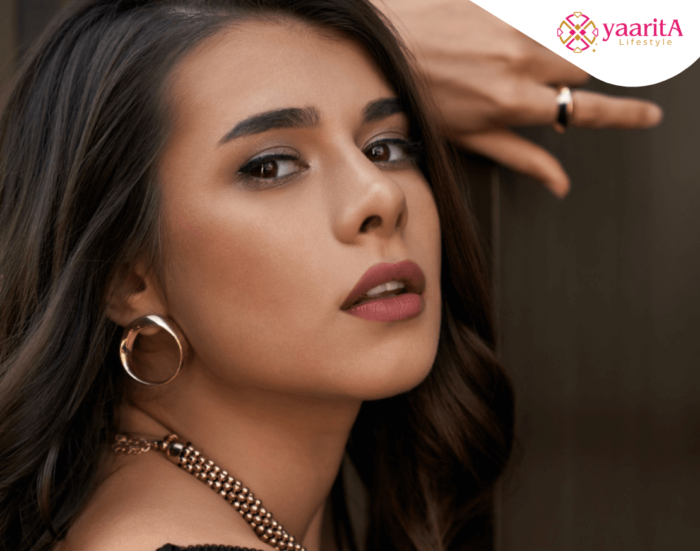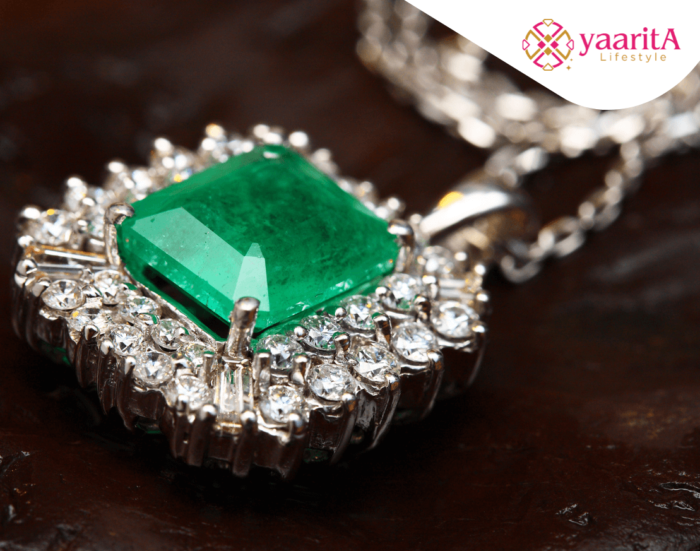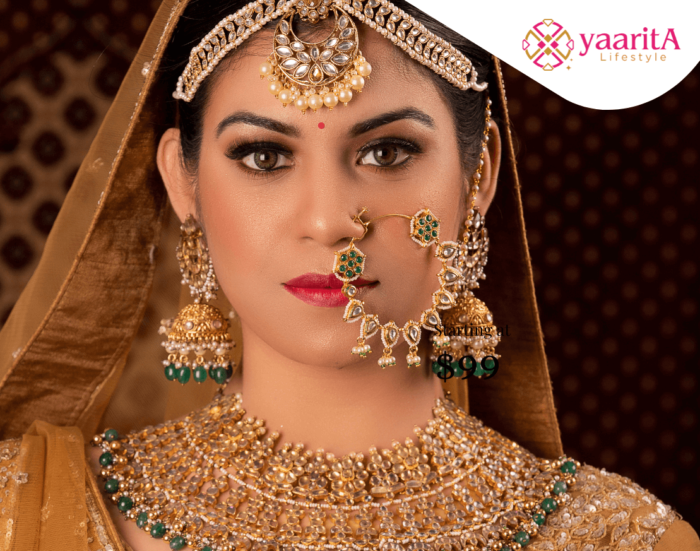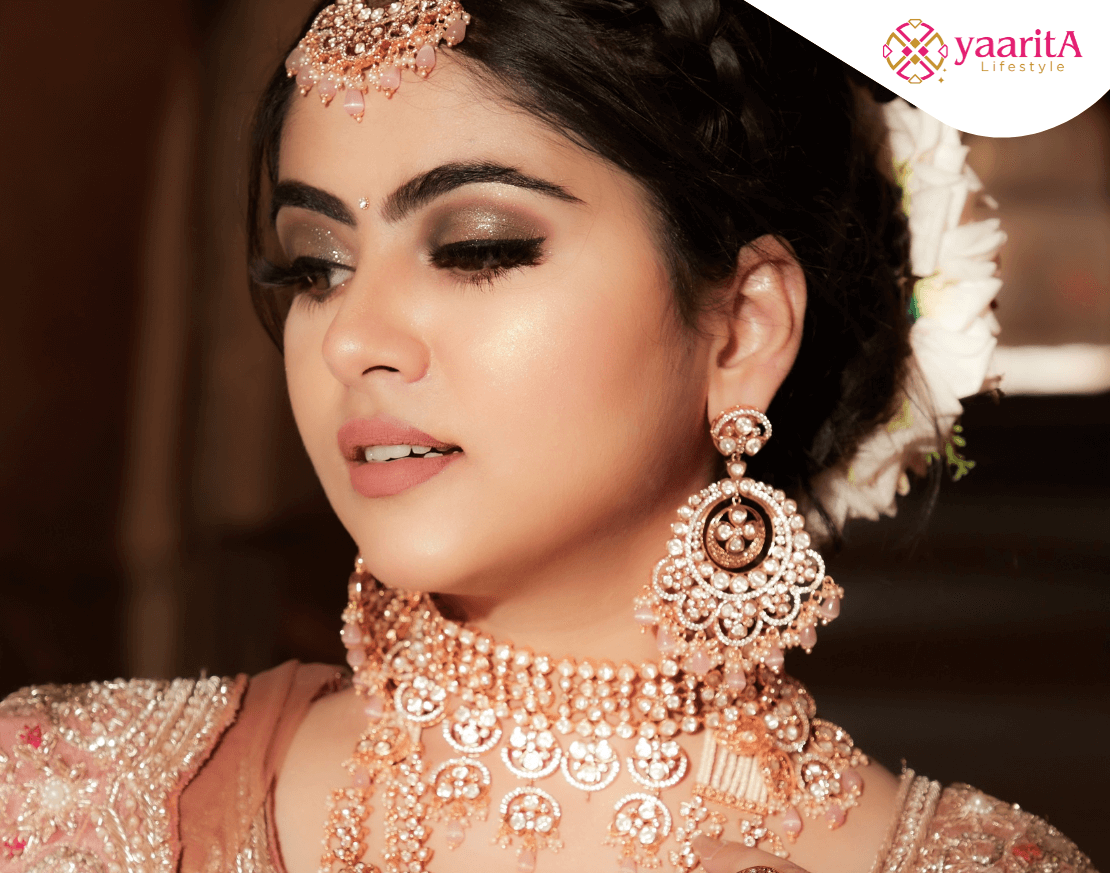What Are the Different Types of Jewellery?
Finding the perfect jewellery to match your outfit for the day is a constant struggle. We understand that the sheer number of jewellery options available can be overwhelming. To make things easier for you, we’ve compiled this handy list of the 16 best types of jewellery with pictures for any occasion!
16 Best Jewellery Types You Should Know
1. Vintage Jewellery
Antique or vintage jewellery is ideal for a chic, sophisticated look. You can wear a statement necklace or earrings with a saree in a light, muted colour like beige, cream, or pastel blue. Other antique jewellery options, such as rings and nose pins, are more versatile and can be worn with both ethnic and fusion clothing.
2. Jewellery from the Temple
Temple jewellery is a type of ethnic jewellery that features the imagery of various gods and goddesses. The original concept of temple jewellery included gold items set with precious gemstones. Temple jewellery is currently inspired by the sculptures, carvings, and idols found in Indian temples.
The goddess Lakshmi is one of the most popular temple jewellery motifs. Trees, leaves, coins, and bells are examples of non-religious motifs. Temple jewellery looks best when worn with kanjeevaram or brocade sarees. They are also a popular choice for bridal gowns, particularly in South Indian weddings.
3. Jewellery with gemstones
Gemstone jewellery is made with precious and semi-precious stones as the foundation, such as emeralds, rubies, and sapphires. The stones are precision cut and polished before being used to craft the jewellery pieces to perfection. Rings, pendants, necklaces, bracelets, and earrings are examples of gemstone-encrusted jewellery.
Every person is assigned a birthstone based on the month they were born in, which is why certain gemstones are considered auspicious due to their astrological connection. Gemstone jewellery can be worn with both ethnic and Western clothing. You can also wear a statement gemstone as a minimalist ring or pendant with any outfit.
4. Platinum Jewellery
Platinum is a protective metal that is often regarded as eternal and everlasting due to the fact that it does not change shape, wear, or colour even if worn continuously throughout your life. Platinum jewellery is also extremely lightweight and durable, making it an excellent choice for everyday wear.
Wear a platinum ring or earrings with your everyday outfit, or go all out with a choker necklace, hoops, and chunky rings for a special occasion.
5. Minakari Jewellery
Minakari, also known as Meenakari, is a type of traditional Indian jewellery that dates back to the 16th century. Minakari originated in Persia and was brought to India by the Mughals. Later, Raja Man Singh of Mewar adapted it for his court, making Rajasthan the epicentre of this type of Indian jewellery. Minakari designs are made by embedding gemstones in molten glasses of various colours, sizes, and shapes, which are then outlined with molten gold or silver wires.
Minakari jewellery is distinguished by beautiful floral patterns and motifs reminiscent of Mughal design and architecture. Heavy Minakari jewellery is appropriate for bridal wear, whereas lighter Minakari necklaces and bracelets can be worn with sarees, lehengas, and ethnic suits.
6. Navratna Jewellery
Navratna means ‘nine gems’ in Sanskrit. Diamond, ruby, emerald, coral, pearl, blue and yellow sapphire, cat’s eye, and hessonite are among the gems. This type of jewellery contains a variety of colourful stones and is considered a symbol of wealth and prosperity in most South Asian cultures.
Navratna jewellery looks best when worn with pastel lehengas and sarees. The softer colour of the dress complements the shade and magnificence of the Navratna earrings and necklaces, creating a royal and stunning appearance. Collar necklaces, choker necklaces, and low-hanging necklaces are some of the most popular Navratna necklaces.
7. Wedding Jewellery
Every woman fantasises about having a lavish, glamorous wedding. After all, your wedding is a once-in-a-lifetime opportunity to make unforgettable memories, and the right outfit can ensure that all eyes are on you on your special day!
Bridal or wedding jewellery is typically heavier in weight. If you are looking for bridal jewellery, go through all of the different jewellery designs – necklace, earrings, nath, anklet, bracelets, maang tika, armlet, and different finger rings – before making a decision! These designs are available in a variety of colours and finishes, allowing you to easily match it to the overall colour scheme of your bridal ensemble.
8. Fashion Jewellery
Fashion jewellery, also known as costume jewellery, does not have a specific design. It instead refers to jewellery made without the use of precious metals or stones. Brass, aluminium, and copper are common base metals used in fashion jewellery.
When it comes to design, fashion jewellery tends to be on the minimalist side, making it easy to pair with everyday outfits. You can wear them to work as well!
9. Gold Jewellery
Gold jewellery is a must-have for all Indian women because it is timeless, elegant, and long-lasting. Whatever the occasion, you can always find a variety of gold pieces of jewellery to match! Gold jewellery looks best with vibrant colours such as red, yellow, and orange. Gold jewellery is perhaps the most versatile item on this list, ranging from bridal sets to pendants and studs for everyday wear.
You can also have other jewellery items that you use frequently gold plated to give them a more sophisticated appearance without spending a fortune. Although pure gold jewellery is expensive, gold never goes out of style, so the payoff is well worth the investment!
10. Filigree Jewellery
Filigree is a unique technique that uses intricate strips of metal (such as gold and silver) to create unique textures and details in a variety of jewellery. Because of its precision, this process is systematic and time-consuming, ensuring that each piece of filigree jewellery in your collection is truly unique!
Filigree jewellery is great for adding extra details to your outfit, so opt for smaller items like pendants and earrings that do not draw attention away from your outfit but rather complement it. Filigree patterns are delicate and elegant, adding a touch of sophistication to any outfit!
11. Artisanal Jewellery
Handmade jewellery exemplifies the diversity of Indian creativity. Because these items are handcrafted without the use of machines, they must be handled with care to maintain their proper form and shape.
Jute, clay, and terracotta designs are examples of handmade jewellery names. These items look great with ethnic clothing, especially Kurtis, slip dresses, and salwar suits. To achieve a cool, boho look, pair chunky handmade jewellery with solid black, blue, or maroon tops and a pair of blue jeans.
12. Pachchikam Jewellery
Pachchikam jewellery is an example of traditional Indian handicraft designs and techniques that originated in Gujarat. These pieces are made of silver, which is then moulded, engraved, and embellished with a variety of colourful (red, blue, green, and white) stones.
Pachchikam jewellery sets are typically comprised of long necklaces, headpieces, and earrings and are intended to be worn only on special occasions. You can also wear a stand-alone Pachchikam broach on your dress to make a statement without wearing any elaborate jewellery.
13. Beaded Jewellery
The bead jewellery is a type of handmade jewellery worn by both men and women. These pieces are made by stringing together different coloured beads on a long string or chord. Beads made of glass, stone, or even plastic can be used.
For a semi-formal event, women can wear longer and more elaborate bead necklaces with sarees, chiffon suits, and Anarkali, whereas men can wear bead necklaces or bracelets with casual shirts in attractive prints and patterns to achieve an effortlessly cool look! When styling bead jewellery, avoid pairing it with other types of jewellery because they may not come together to form a cohesive fashion statement.
14. Kundan Jewellery
Kundan jewellery is very similar to Pachchikam jewellery, with the main difference being that Kundan uses a gold base while Pachchikam uses silver. Kundan jewellery is a symbol of luxury and extravagance, as the word ‘Kundan’ means pure, refined gold.
As a result, these items are typically reserved for special occasions and are frequently included in bridal looks. You can also wear Kundan choker necklaces or a stunning pair of gemstone-embedded earrings with a western dress to create a one-of-a-kind fusion look!
15. Polki Jewellery
Polki jewellery is one of the oldest Indian jewellery forms, made with gold foil and uncut gemstones such as diamonds, and is frequently passed down through generations as family heirlooms. Polki necklaces, bracelets, and armlets are only appropriate for ethnic outfits, but they can quickly transform a dress for a special occasion, such as Diwali, Karva Chauth, or Bhai Dooj!
16. Jadau Jewellery
Jadau jewellery, introduced to Indians by the Mughal rulers, is an exclusive, traditional design made by groups of artisans known as Chiterias and Ghaarias. The designs are created in premium-quality gold casting with precious and semi-precious stones such as diamonds, rubies, sapphires, emeralds, and pearls.
Jadau jewellery is ideal for weddings and other special occasions. Necklaces, rings, and tikas are examples of Jadau jewellery that can be worn with almost any Indian outfit.
Jewellery allows you to make a bold and unique fashion statement, it is a reflection of your personal style, and it changes the overall appearance of your outfit. However, depending on the occasion, it is critical to first select the appropriate type of jewellery. We hope that the list we’ve compiled can help you with that, making your job a lot easier the next time you’re at a loss for what to wear and need some jewellery suggestions. If you found this article useful, you can find a variety of other curated fashion guides on yaaritA Lifestyle Jewellery!

